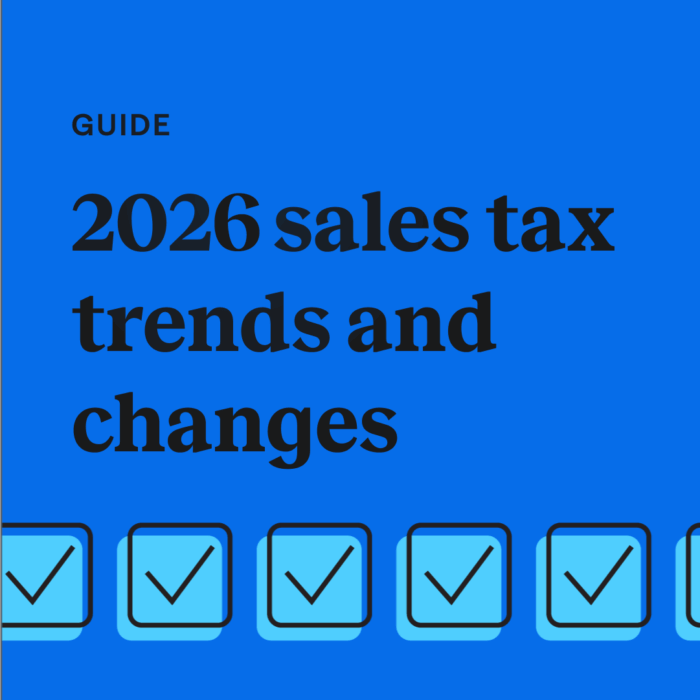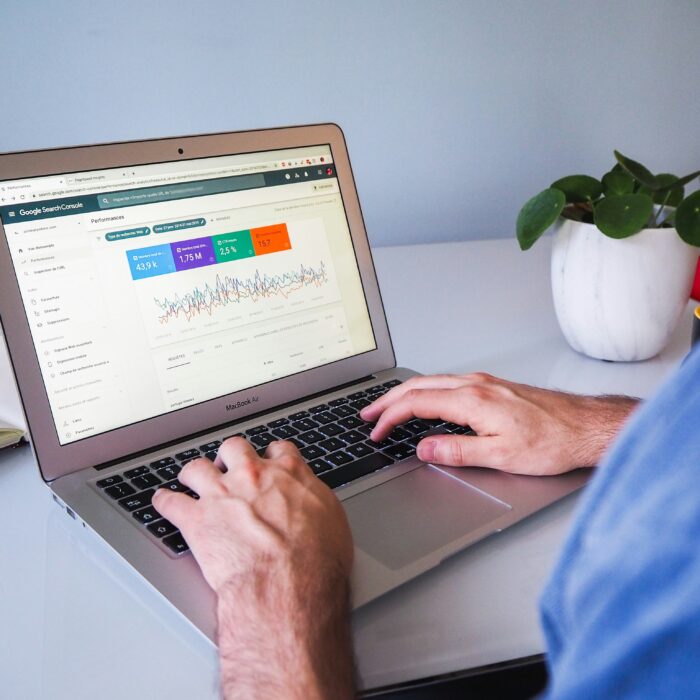The six steps to sales tax compliance for the new year
by November 12, 2024
The Decembruary filing season is almost upon us, and now is the time to make sure you’re ready. To help, we’re outlining the six key steps to compliance to set you up for success in the upcoming year. Use it as your go-to reference as you navigate the complexity of sales tax in the months ahead. It’s the one guide you’ll always want handy.
Six key steps to compliance
1. Determine where you have sales tax nexus and are required to collect sales tax.
In the US, retailers are required to collect sales tax from buyers in states where they have “sales tax nexus.” “Nexus” originates from a Latin word meaning “to bind” or “to tie.” If you have sales tax nexus, think of your business as having a “tie” to the state.
There are two different types of sales tax nexus, or in other words, two different ways you can meet the requirements to collect and remit sales tax to a state. Physical nexus is just that, a physical connection to a state. Examples of physical nexus (also sometimes referred to as “physical presence”) include employees, offices, stores, warehouses, conference attendance, servers, etc.
Then there is economic nexus. Based on a 2018 Supreme Court ruling, states are now allowed to require that businesses who exceed certain economic thresholds in the state are required to collect sales tax from buyers in that state. For example, you may have never set foot in a certain state, but if your business transacts more than $100,000 in sales in that state, then you are considered on the hook to collect sales tax. What constitutes nexus varies from state to state, and you can find each state’s definition here.
2. Verify if your products are subject to sales tax.
In the US, most “tangible personal property” is taxable. In other words, most items like furniture, jewelry, toothbrushes, coffee mugs, etc. will be subject to sales tax.
However, some items considered to be “necessities” may not be taxable in all states. For example, grocery items are not taxable in most states. However, almost all prepared food bought at a restaurant is generally taxable. Clothing is another example. While clothing is not taxable in some states, luxury items are often taxable in states where most clothing is considered non-taxable.
There are other category exemptions as well, so it’s important to check the state to determine if you should collect sales tax on your products.
If the items you are selling are not taxable, then you are not required to collect sales tax on those items.
3. Register for sales tax permits
Now that you have determined you have sales tax nexus in a state and that the products you sell are taxable in that state, your next step is to legally collect sales tax by registering for a state sales tax permit.
Each state’s taxing authority — usually called the [State] Department of Revenue/Taxation — handles sales tax registration. You can register for a sales tax permit yourself or let TaxJar register for you.
When filing online, you will sometimes receive your sales tax permit number instantly, though with some states it will take up to 10 business days. If you register on paper, it may take two to four weeks to receive your sales tax permit.
Don’t skip this step! It is unlawful to collect sales tax from buyers without a valid sales tax permit. While collecting sales tax without a valid permit may be an honest mistake on a business’s part, states generally view this as tax fraud and take it very seriously.
We’ll provide directions on registering for a sales tax permit in each state on your own here. If you’d like to streamline your compliance, TaxJar can handle the registration process for you. Visit our registration page to request our team of experts manage your sales tax registration on your behalf.
4. Set up sales tax collection on all your sales channels.
Once you have your valid sales tax permit, your next step is to begin collecting sales tax from your customers. Each online shopping cart and marketplace allows you to set up sales tax collection. Here’s where you can find guides on how to set up sales tax collection on the major shopping carts and marketplaces.
States generally require online sellers to collect sales tax in one of two ways:
- Origin-based sales tax collection
- Destination-based sales tax collection
This concept is also commonly referred to as “sales tax sourcing.”
Find out if your nexus state is an origin-based or destination based state here.
5. Report how much sales tax your business collected.
Soon enough, a sales tax filing due date will roll around. When preparing to file a state sales tax return, you need to determine how much sales tax you collected from buyers in not only the entire state, but in each county, city and other special taxing district.
States rely on sales tax dollars to pay for infrastructure, public safety and other budget items. But they won’t know which city or local area to allocate those funds to unless you break down your transactions for them.
In a small number of states, like origin-based states or states that only have a single statewide sales tax rate, filing sales tax isn’t very difficult. But, in most cases, breaking all your transactions down manually is a time-consuming chore, especially if you are a high-volume seller or you sell on multiple channels.
6. File sales tax returns.
Your next step is to file your sales tax returns with the state. Most states allow you to file sales tax online, and some require it. If you wish to file manually, login at your state’s taxing authority website to file. Here are instructions for manually filing sales tax returns in each state.
Here are two key things to remember when filing a sales tax return:
- File “zero returns.” It’s important to file a sales tax return every time you have a filing due, even if you didn’t collect any sales tax over the taxable period. States consider your sales tax filings to be a “check in.” If a seller fails to file, the state could charge a penalty or even revoke the seller’s sales tax license. Be prepared to file sales tax returns by the due date, every time, even if you don’t owe a penny in sales tax.
- Don’t forget sales tax discounts. About half the states with a sales tax allow on-time sales tax filers to keep a very small amount (usually 1-2%) of the sales tax collected. Here is a list of states with sales tax discounts.
Automate your sales tax with TaxJar
Ready to make this year you streamline your sales tax compliance? TaxJar can help.
TaxJar is reimagining how businesses manage sales tax compliance. Our cloud-based platform automates the entire sales tax life cycle across all of your sales channels — from calculations and nexus tracking to reporting and filing. With innovative technology and award-winning support, we simplify sales tax compliance so you can grow with ease.
Automating your sales tax through a trusted solution increases efficiency and accuracy, but also allows you to focus on what’s most important: running your business. With TaxJar, you can swap the hours you’d spend navigating multi-state payment processes with automatic monthly reports, on-time filings, and friendly support when you need it the most. Get started for free with a 30-day TaxJar trial today.








